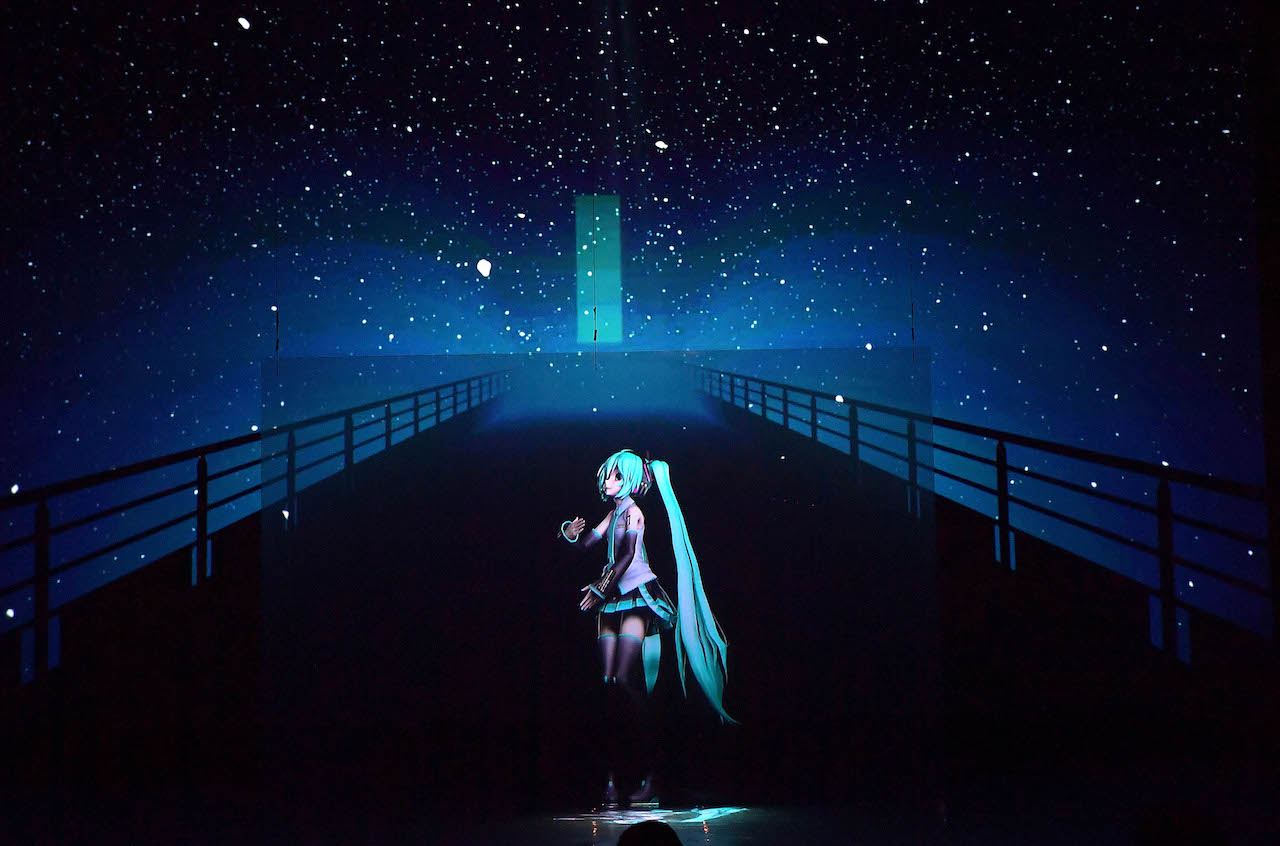- One of Japan's biggest pop stars doesn't actually exist. Created by Sapporo-based company Crypton Future Media in 2007, Hatsune Miku is a hologram originally built to sell Vocaloid 2 synthesisers. But the turquoise-haired avatar rapidly acquired a life of her own, as fans began cosplaying, creating fan art and writing music for her (she currently boasts a catalogue of more than 100,000 songs). At the height of her popularity, around 2010, she was performing concerts to packed stadiums, where she'd be projected onto a translucent screen to give a curious 2.5D effect. Hatsune Miku translates from Japanese as "first sound of the future," and it's a fitting name—her success gestures to a future where celebrities are virtual, created by fans, for fans.
Miku usually performs sugary J-pop to arenas of glowstick-wielding devotees, but her appearance at the Barbican on Sunday was a different proposition. Still Be Here is a multimedia project created by Laurel Halo, Mari Matsutoya, choreographer Darren Johnston and digital artists Martin Sulzer and LaTurbo Avedon. (LaTurbo Avedon is also a virtual entity, presenting art anonymously via a digital avatar). The team used Miku's image and music to deconstruct her persona, blending songs, graphics and documentary interviews into an intriguing and bewildering performance.
The Miku hologram danced, sang and tossed her pigtails centrestage, while a collage of 3D graphics and interviews played on three enormous screens behind her. Every so often, she would turn sweetly to watch them. The interviews, conducted with media academics, diehard fans and Miku's creator, ranged from illuminating to obscure. A video of Miku played over them so as to make it seem like each of the voices belonged to her, an effect that touched on one of the key components of her success: she is a vessel that can be programmed by anyone, an adorable face with infinite voices.
Halo's music largely provided an ambient backdrop to the visual performance, a swirling combination of gentle pads, insectoid chittering and industrial clanks. Late in the evening, Miku performed two proper songs, much to everyone's delight. Finally, the crowd got to see her in action, while also hearing Halo in accomplished pop mode. The best track, "Until I Make U Smile," paired stirring piano chords with a gravelly bass throb, the sweet, synthesised notes of Miku's voice soaring above Halo's melancholic composition. The lyrics, assembled by Matsutoya, took lines from Japanese folk songs, fragments of other Miku tracks and even slogans from corporations that had used Miku as a mascot. There was a fractured poetry to them. At one point a letter from an ardent fan appeared onscreen, asking a question of Miku's tender performance. "How can math and logic become so warm and loving?"
Still Be Here was a thought-provoking introduction to Hatsune Miku, even if it felt like the team were happy to gesture to the big ideas and questions surrounding her without directly addressing them. For a small portion of the audience, though, there was no introduction needed. Nestled in among the adults and children queuing for selfies with Miku after the show were a group of cosplayers—one wore an architectural blue wig and a pair of enormous black wings. They didn't need to be told how to love Miku, nor did they seem concerned with the academic debates surrounding her image. They call her an angel. To them she is more perfect than anything real.
Photo credit /
Mark Allan/Barbican
